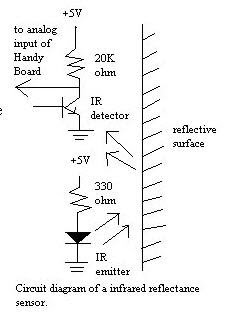
Researchers have designed a robot that uses a novel form of electrically activated adhesion to enable it to scale any kind of vertical surface. The robot can even climb surfaces that are dusty or wet, be they concrete, glass, or drywall.
"What's really unique about this is the technology, not the robot," says Harsha Prahlad, senior mechanical engineer at SRI International, a nonprofit research organization based in Menlo Park, CA. There are other robots that can climb walls. But these have usually involved using microscopic fibers designed to mimic the function of the hairlike setae that give geckos their remarkable sticking power, Prahlad says.
In contrast, SRI's robot works by inducing electrostatic charges in the surface of a wall. The advantage here is that the adhesive climbing surfaces of the robot can be turned off, making movement much simpler, says Prahlad. It also makes the robot's adhesive surfaces self-cleaning, he says, thereby avoiding any gradual buildup of dust and dirt that would ultimately reduce the adhesion.
Tests have shown that the robot is capable of generating 1.5 newtons of sticking force per centimeter square of contact with a wall. Presenting his results at this year's International Conference on Robotics and Automation, in Pasadena, CA, Prahlad showed that the robot was able to scale walls while carrying weights of up to 75 pounds.
"It's an interesting and robust approach," says Metin Sitti, a mechanical engineer at Carnegie Mellon University, in Pittsburgh, who has been working on wall-climbing robots for some time. However, he says, the forces generated are just one-tenth as strong as is currently being seen when the gecko-inspired approach is used.
On the plus side, however, the simplicity of Prahlad's approach should make it easier to apply to human wall-climbing applications, says Nicola Pugno, a professor of structural mechanics at Turin Polytechnique, in Italy, who has been working on a sort of Spiderman suit using nanotube-covered adhesive surfaces.
"There is no fundamental reason why you can't scale this up to, say, 200 pounds," says Prahlad. So with a suitable interface, it should be possible to allow a human to use this technology to climb walls, he says. However, such a system would require large pads to increase the surface contact of a person's hands. Otherwise, there would not be enough sticking power to support his or her weight, says Prahlad.
The attractive forces that create the adhesion come from electric fields generated by positive and negative electrodes within the surface pads of the robot, says Prahlad. When a high voltage is applied to these electrodes, positive and negative charges build up, which, in turn, attracts opposite charges from the surface of a wall near the electrodes




 IR emitter and IR phototransistor
IR emitter and IR phototransistor










